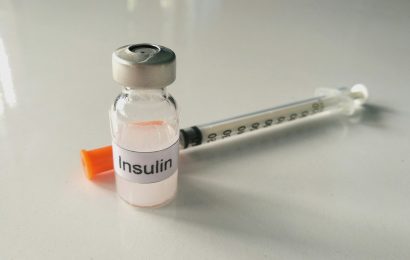Overview of treatment approaches:
• Nondrug therapies
• Relaxation and biofeedback
• Anodyne therapy
• Exercise
• Massage
• Daily foot care
Diabetes is hard on feet. Because the feet are farthest from the heart, any problems with blood flow can leave feet without enough circulation. Results can include numbness, loss of foot strength, and worse. Fortunately, there are some good ways to heal and protect your feet.
As Birgitta I. Rice, MS, RPh, CHES, wrote here, much of the pain and numbness people with diabetes experience comes from nerve damage. The nerves are injured both by poor circulation and by high glucose levels.
We really need healthy nerves. (As a person with a nerve disease, I know about this.) According to Rice, “Loss of nerve fibers can result in muscle weakness, numbness, loss of reflexes, foot deformities, change in gait, and impaired balance and coordination. Loss of sensitivity to pain or temperature can also occur, leading in turn to blisters and sores from foot injuries that go unfelt.”
Numbness is dangerous. Sometimes, people can have a pebble in their shoe and not notice it. Others may get in a hot bath and not realize their feet are being scalded. These kinds of seemingly minor things can lead to infections, which don’t heal because of having poor circulation. This is the major pathway to losing a leg to amputation. People with diabetes are eight times more likely than other people to have a lower leg amputated.
If you just woke up one day with numb feet, you would notice a big difference and ask about ways to treat it. It doesn’t work that way, though. Numbness comes on slowly over years, so you don’t notice day-to-day changes. Also, severe pain often comes before numbness, so that the numbness is perceived as a relief rather than a problem at first.
The relief of numbness comes with major costs, though. Numbness may make muscles weaker and balance less steady. So people are more likely to fall, and their feet can become deformed by walking wrong, since they can’t feel where the pressure is. So how can we protect our foot nerves?
Treatments
There are many drugs for nerve pain, but not much for numbness. Lowering blood glucose and blood pressure will improve circulation, however, and drugs are one way to do that.
Nondrug therapies
Nondrug therapies for feet include creams and oils for the skin, such as L-arginine cream. Aromatherapy with scents such as geranium and lavender are recommended by herbalists to improve circulation.
Relaxation and biofeedback
There is a trademarked technique called WarmFeet that many diabetes educators swear by. Regular practice with WarmFeet has been shown to increase circulation, lower blood pressure, and improve coping skills.
The technique starts with relaxation. Then you visualize (imagine) feet warming and healing.
WarmFeet also includes biofeedback. A temperature sensor tells you if your feet are warming or cooling. You can notice what patterns of thoughts and breathing cause the feet to warm up, and try to stay in that mental state.
In a study at the University of Wisconsin, 18 people with chronic, nonhealing ulcers had total healing of the wounds and improved sensation in their feet after using WarmFeet regularly for 12–13 weeks.
You can read more about WarmFeet here. The kit costs about $23.
Anodyne therapy
Anodyne therapy is application of infrared light that supposedly improves circulation and even grows new blood vessels. Some studies show benefits and others don’t.
It was interesting to read this article from Diabetes Care that showed anodyne therapy to be no better than placebo (sham) therapy. The sham therapy involved putting the same pads on the legs and feet as in the anodyne therapy, but the infrared lights were turned off. Instead, there were heaters that kept the leg at the same temperature the light would have, so subjects wouldn’t know the difference.
The sham therapy group did as well as the anodyne group, but maybe this shows that they both work. Both treatments are pleasant, warming, and relaxing, so maybe they worked like the warm feet treatment — through relaxation. Anodyne treatments are either done in a podiatrist’s office or at home. A home set costs roughly $950 new or $550 “reconditioned.” Insurance typically does not cover it.
Exercise
Exercise is effective treatment for neuropathy, but numbness and pain can make exercise hard to do. WebMD suggests low-impact practices like cycling, swimming, or sitting aerobics. They say don’t make it too hard — it’s not about feeling the burn, it’s about having an active life. Doing fun things, social things like dancing or mall walking, practical things like yard work or gardening — just getting used to moving more — is all the exercise you need.
Massage
Massage — either partner or self-massage. Gentle touch helps circulation and nerve function and reduces stress.
Daily foot care
Foot care. Daily foot inspection and care is crucial to preventing sores and infections. Read a good article on caring for your feet here.
The bottom line is to give your feet and your whole body some love and attention. Take the time for some relaxation or gentle exercise. Slow your mind down, move your body more, enjoy your life. Your feet will start to enjoy it more, too.
If you have found any ways to improve foot pain or numbness, or things that are supposed to work but don’t, please let us know with a comment.
Want to learn more about managing neuropathy? Read “Coping With Painful Neuropathy” and “Controlling Neuropathic Pain.”





